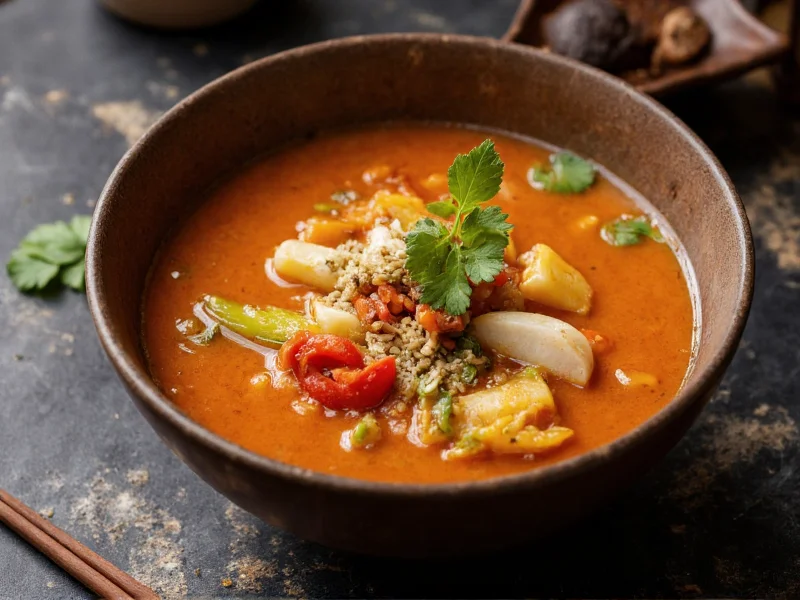When searching for "rao soup," consumers typically seek information about Rao's Homemade soup products, their ingredients, availability, and culinary applications. Unlike traditional regional soups with centuries of history, Rao's soup represents a modern convenience product line that maintains the quality standards of the iconic Rao's restaurant brand.
The Rao's Brand Legacy
Founded in 1896 in East Harlem, New York, Rao's restaurant became a legendary Italian dining institution. The Rao's Homemade product line launched in 1996, bringing the restaurant's signature recipes to supermarket shelves. While famous initially for marinara sauce, the company expanded into soups around 2010, applying the same commitment to quality ingredients that made their sauces popular.
Rao's Soup Product Line Overview
Rao's soup collection features several varieties that maintain the brand's reputation for quality. Each soup contains simple, recognizable ingredients without artificial additives. The current lineup includes:
| Soup Variety | Key Ingredients | Notable Features |
|---|---|---|
| Tuscan Bean | Cannellini beans, tomatoes, carrots, celery, onions | Vegan, gluten-free, rich in fiber |
| Chicken & Gnocchi | Chicken, potato gnocchi, carrots, celery, onions | Contains gluten, no artificial preservatives |
| Tomato Basil | Tomatoes, onions, carrots, celery, basil | Vegan, gluten-free, low sodium option available |
| Minestrone | Tomatoes, beans, pasta, vegetables | Contains gluten, hearty vegetable profile |
Ingredients and Nutritional Profile
Rao's soup products distinguish themselves through transparent ingredient lists. Unlike many commercial soups, Rao's avoids high-fructose corn syrup, artificial flavors, and excessive sodium. A typical serving (1 cup) contains approximately 100-150 calories, with 3-5 grams of protein and 150-300mg of sodium depending on the variety.
The brand's commitment to quality means their soups contain recognizable ingredients you might find in your own pantry. For example, Rao's Tuscan Bean soup lists just nine ingredients: cannellini beans, tomatoes, water, carrots, celery, onions, extra virgin olive oil, salt, and black pepper. This simplicity appeals to consumers seeking cleaner eating options without sacrificing convenience.
Culinary Applications Beyond Basic Serving
While Rao's soups can be enjoyed simply heated in a pot or microwave, their quality ingredients make them excellent culinary building blocks. Home cooks seeking time-saving solutions while maintaining quality often use Rao's soup products as bases for more complex dishes:
- Enhanced main dishes: Simmer Rao's Tomato Basil soup with Italian sausage and pasta for a quick pasta al pomodoro
- Sauce foundations: Reduce Tuscan Bean soup to create a hearty bean spread for crostini
- Casserole components: Use Chicken & Gnocchi soup as the liquid base for baked pasta dishes
- Freezer-friendly meals: Portion soups into freezer bags for quick single-serving meals
Availability and Purchasing Options
Rao's soups are widely available across North America in major grocery chains including Whole Foods, Kroger, Publix, and Wegmans. They typically retail between $3.99-$4.99 per 17.6 oz container. The product line has expanded beyond traditional grocery channels to include online retailers like Amazon Fresh and the brand's own website for direct ordering.
When searching for specific Rao's soup varieties, consumers should note that availability can vary by region and season. The brand occasionally releases limited-edition flavors, making certain varieties harder to find. Checking the Rao's store locator provides the most current availability information for specific products in your area.
Comparing Rao's Soups to Homemade Alternatives
For home cooks evaluating Rao's soup products against homemade versions, several factors come into play. While nothing compares to soup made from scratch with fresh ingredients, Rao's offers a premium convenience option that bridges the gap between typical canned soups and restaurant-quality preparations.
Nutritionally, Rao's soups generally contain less sodium and fewer additives than standard grocery store soups, though they still can't match the complete control of homemade versions. The ingredient quality approaches what you'd find in a well-prepared homemade soup, with the trade-off being slightly higher cost per serving compared to cooking from scratch in bulk.
Time-pressed consumers seeking quality without extensive preparation often find Rao's soup products represent an excellent middle ground. The soups require minimal additional preparation while delivering restaurant-inspired flavors that elevate simple meals.
Consumer Considerations When Choosing Rao's Soups
When selecting from Rao's soup varieties, consider these practical factors:
- Dietary needs: Several varieties are vegan and gluten-free, clearly marked on packaging
- Serving size: Containers provide approximately two servings, useful for meal planning
- Storage: Shelf-stable until opened, then refrigerate and consume within 5 days
- Heating methods: Can be heated on stove, in microwave, or even enjoyed cold in some recipes
Reading the ingredient list remains crucial for those with specific dietary restrictions, as formulations can change. The brand maintains transparency about potential allergens, with clear labeling for common allergens like gluten and dairy.











 浙公网安备
33010002000092号
浙公网安备
33010002000092号 浙B2-20120091-4
浙B2-20120091-4